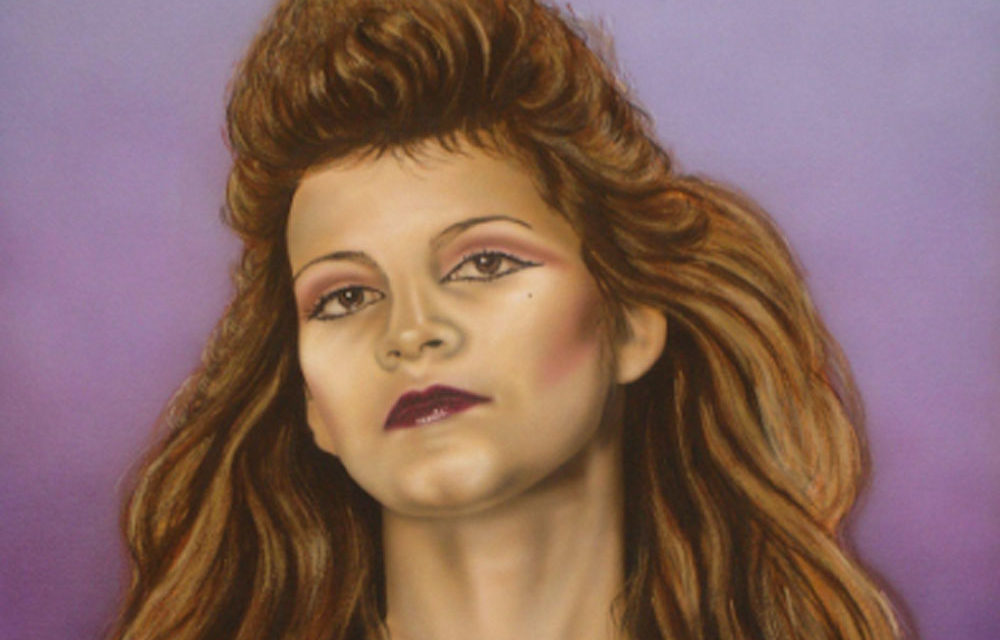Gaspar Enriquez’ recent inclusion in the National Portrait Gallery of the Smithsonian Institution in Washington, DC boosted his already sterling reputation as one of America’s premier Latino artists. Over a 50 year career, Enriquez has devoted himself to borderland art framed by his life experiences, his environment, and the people of his hometown of El Paso, Texas.
Gaspar Enriquez’ birth in the early 1940s coincided with the evolution of a barrio youth cultural rebellion popularly known as pachuquismo. It was a term used by Mexican Americans identifying with a culture that rejected Anglo norms–dress and behavior–and identified closer to “Black cool,” one might say a precursor to modern Latino reggaeton hip-hop.
The evolution of a new Latino cultural movement coincided with the relocation of thousands of young men and women to the City of Angels in California beginning in the early 1940s. Los Angeles had jobs, sun, and Chicano culture. These El Paso transplants also introduced their own version of music, lowriders, and “calo,” the language of the pachucos, to Southern California.
El Paso had sufficient influence in “pachuquismo” that the city on the border earned the nickname “El Chuco.” Many Mexican Americans traced their Chicano roots to that generation of the 1940s and 1950s. Enriquez confirmed this evolution, stating: “One Is born a Mexican American, but one chooses to be a Chicano.”
Pachuquismo and Chicanismo are terms I grew up with in the Westside of San Antonio. I lived in one of the nation’s largest Mexican American barrios and some of my neighbors, cousins, and school friends identified with the “Chucos.” My older brother and I belonged to a lowrider club and we were proficient in “calo.” Although our neighborhood was surrounded by several Chicano gangs, our parents made sure that we stayed away from gang activity which too often included underage drinking, robust partying, street fights, and, for some, prison time.
Enriquez had an early interest in art and had been influenced by Mel Casas, a neighbor who taught art at Jefferson High School. Upon high school graduation in 1960, Enriquez moved to East Los Angeles where he worked as a machinist and took evening classes at East L.A. Junior College. He returned to El Paso in the late 1960s enrolling at the University of Texas El Paso.
Enriquez’ neighborhood was known as “Segundo Barrio,” a Mexican American enclave blocks away from the Rio Grande and the twin border city of Ciudad Juarez. Until recent times, border residents from both sides of the border crossed easily back and forth, some on a daily basis for work or study at local secondary schools or at
the University of Texas-El Paso campus. The events of 9-11 and the sharp rise of narco traffic and violence has significantly changed that traditional trans-border movement.
Segundo Barrio has one high school, Jim Bowie H.S., aka, La Bowie. Enriquez taught there for 34 years inspiring many art students and serving as a role model for many other Latino students. While teaching, Enriquez also attended New Mexico State University in nearby Las Cruces, New Mexico, earning a Master’s degree in Metal Arts in 1985.
The El Paso borderlands has produced numerous prominent Latino artists, including Mel Casas, Luis Jimenez, Ricky Armendariz, and Zeke Pena. Both Mel Casas and Luis Jimenez lived in El Segundo Barrio. Enriquez credits both for mentoring and inspiring him in his youth. Casas and Jimenez are collected by the Smithsonian’s Museum of American Art. Luis Jimenez is also one of the subjects of Enriquez’ three paintings at the National Portrait Gallery.
Luis Jimenez. Courtesy of Gaspar Enriquez.
The 400 year old community of San Elizario, 20 miles southeast of El Paso, is a borderland treasure of the El Paso region and a haven for many artists. Enriquez, one of 52 artists living in San Elizardo, paints and also devotes time to the restoration of his historic adobe house, a studio, and two historical buildings near the plaza. Al Borrego, a fellow artist, history promoter, and neighbor of Enriguez noted: “We call ourselves the birthplace of the American Southwest because when the Oñate expedition came through here in 1598 he [Onate] claimed New Mexico for New Spain.” The famed El Camino Real de Tierra Adentro created by Onate linked Mexico City to Santa Fe serving as a “thoroughfare of merchandise for almost 300 years into the American Southwest.”
Enriquez uses an airbrush for most of his painting, working diligently to capture both a barrio lifestyle and the mind set of many of his “Cholo/a” subjects who display what he calls “an attitude.” In Gaspar Enriquez: Metaphors of El Barrio, writer Lucy Lippard comments that “[t]he confrontational gazes, the stances, the fashions, the headgear, the shades, the tattoos, the crossed arms or legs, are all components of the “attitudes.”
Benito Huerta, Professor and Director of The Gallery at UT-Arlington, reminds us that “Gaspar Enriquez’s vivid portraits with their spare background tell the story of his life, the stories of his students’ lives, the stories of the lives of the barrio of his childhood–all within this narrow confine of a minimalists aesthetic.” In Enriquez’ art which captures the people, the culture, and the history of the Borderlands, we come to terms with the past and present reality of El Paso and indeed, much of the Southwest.
Gaspar Enriquez: Borderland Artist









